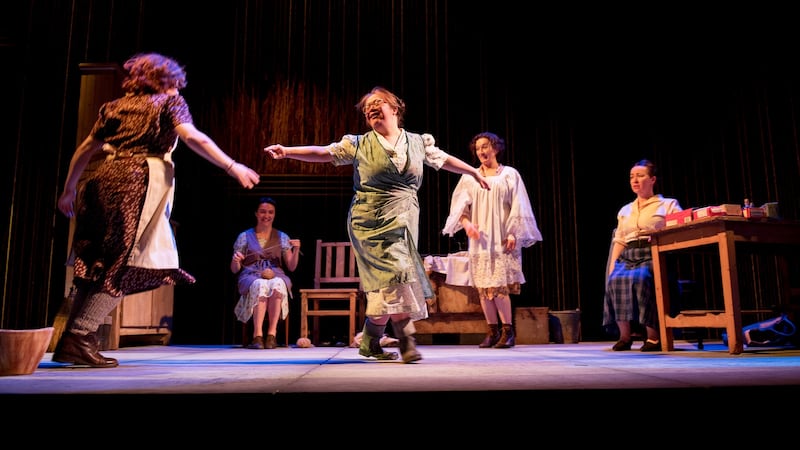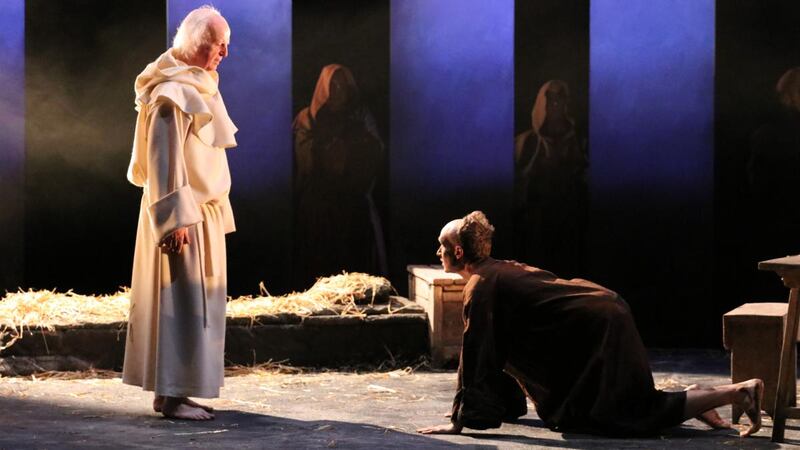Who is the art market for if not the morbidly curious? In that marketplace, the impact of an artist’s demise on the value of their works is sometimes referred to as the “death effect”.
The value of art – whether the artist is alive or dead – will always depend on demand, and people gravitating towards it. No one can predict what desire there will be for a given artwork in the future, but what is obvious is that when an artist’s life comes to an end, their creativity ends too. The supply-and-demand model that determined the value can go into flux.
For something scientific on the topic, check out The Economics of American Art by Robert B Ekelund, John D Jackson and Robert D Tollison. That book uses auction data and a sample of visual artists to learn more about the death effect. The research showed that prices tended to plummet the year the artist dies, probably because art owners are selling up, flooding the market. Then after a period, the value would rise again.
Friel's achievement seems measureless compared with any native contemporaries
There isn’t an easy explanation for this rise. It might have as much to do with microeconomics as it does with media coverage of the artist’s death, the fathomless meditations of art criticism, and retrospective flashpoints such as exhibitions and documentaries.
It would be surprising if the death of an artist as eminent as Brian Friel did not impact how their art is perceived in some way. There was no question of Friel's accomplishment before his death in 2015. The playwright, who had more than 30 plays produced, depicted 20th-century small-town life (in the fictional Ballybeg) – often a place of parochial oblivion and muted family emotions – with a surprising lightness of touch. A breakout play, 1964's Philadelphia, Here I Come!, and a late-career hit, Dancing at Lughnasa, both made gainful transfers to Broadway, a distinction that's less imaginable now, with the New York district dominated by musicals.

Remarkably, Friel’s status wasn’t built on these extraordinary success stories alone. During the Troubles, plays such as Translations, filled with a multigenerational sense of restlessness and insecurity, felt like urgent responses to shattering atrocities. Throw in an impressive flair for importing recognisable techniques from Anton Chekhov’s plays, as well as becoming a competent translator of the Russian master, and his achievement seems measureless compared with any native contemporaries.
Weird decade
Friel’s name isn’t going to vanish from programmes any time soon, but there is always a chance of something daring becoming complacent. Isn’t it the case that during the 2010s – a period after Friel stopped writing – the plays had a weird decade in Ireland? Bar a few exceptions, the works of the number one playwright often received bright reassuring productions, usually seen in risk-averse summer slots, and rarely with any bold new approaches. On stage, the grass in Ballybeg seemed greener than before, and its oppressive small-town life came across as storybook rather than startling. It’s as if, in banking on the perceived prestige of modern classics, most companies had stopped taking risks when it came to Friel.
If that period saw little reinvigoration, we might be in the middle of a significant shift. In late 2021, several productions began to be announced, each sounding adventurous in their undertaking. So far four major revivals will occur within seven months, to audiences in Cork, Letterkenny, Dublin and Belfast. Friel is beginning to reappear all over.
A visual art critic might look at this, the first surge in popularity since this playwright’s death, and wonder: is this the death effect? Following the outpouring of grief and tributes by artists, fans and critics a few years ago, making persuasive accounts of his artistry, there’s a noticeable emphasis on replenishing the plays rather than presenting them as expensive classics.
"Friel had created this nearly 60 years ago, yet the play has an immediacy and a theatricality which is breath-taking in the moment it is experienced"
For instance, when Philadelphia, Here I Come! went before audiences at the Cork Opera House last October, it was humming with new energy. The production recruited a cast of young actors full of invention. It seems an imaginative leap to the distant 1960s era of Friel’s play, where a man prepares to leave his silent father and emigrate to the US. Similarly, the play’s central conceit – the emergence of the man’s “private” self as a separate character, lashing out at parochial society – might feel dated now, when pop culture is wild with metaphors for psychoanalysis.
Yet, producer Patrick Talbot observed the play was fresh to audiences. "Friel had created this nearly 60 years ago, yet the play has an immediacy and a theatricality which is breath-taking in the moment it is experienced, especially if, as for so many of our audience, it is being experienced for the first time," he says. Talbot picked up on a noticeable attendance by younger audiences, which is heartening, as the play is an enraged picture of youth culture.
Lesser known
Producers often choose the best-known of Friel's plays to stage, so it came as a surprise when An Grianán Theatre in Letterkenny announced a revival of The Enemy Within, an early drama that has rarely been seen since its 1962 premiere. The play – a dramatisation of Columba's exile from Ireland in the fifth century – was programmed as part of the 1,500th anniversary celebrations of the abbot.
The Enemy Within is a gruelling story of a man torn between allegiances to his family and his vocation. “Some people might have been surprised,” says Patricia McBride, director of An Grianán. “It’s about the life of Columba, so people mightn’t have expected such a vigorous and dramatic play instead of a heritage event or a re-enactment,” she says. That also makes it sound like a good proposition: the opportunity to rediscover something unfairly neglected.

Even familiar titles seem to ride the aftershock of recent events, with the Abbey Theatre’s production of Faith Healer, following a miracle curer and his travelling companions, feeling alive to contemporary exploitation following #MeToo and a rise in conspiracy theories. A press release for that theatre and the Lyric Theatre’s upcoming co-production of Translations, a history play set during the British Ordinance Survey visit to Ireland in the 19th century, referenced Brexit and Irish collaboration with a wider European community.
This could be just the beginning of the wave, as the appeal of Friel’s plays shows no sign of faltering. It will be curious to see the extent of the exploration, and if the plays, now secure in their status as classics, will undergo the imaginative reinterpretations of contemporary theatre. For instance, in January a revival of Eugene O’Neill’s family drama Long Day’s Journey into Night opened in New York. It brought the characters, drained by addiction and conflict, into 21st-century crises, via colour-blind casting, intelligent design and adjustments to the script. (O’Neill’s play is only eight years older than Philadelphia, Here I Come!)

Estate’s approach
That will depend on the literary estate, representing a playwright who was protective of his work. In 2001, contemporary theatre company Brokentalkers presented It's Now 16 or 17, a new version of Philadelphia, Here I Come!, which cast a slide projector in the role of the man's private self, and included a scene where he, repulsed by life, ingests pages of the script and vomits. Brokentalkers spent the profits from their next play paying for a legal case initiated by Friel.
The greatest departure allowed in recent memory was a 2018 revival of Dancing at Lughnasa by Blue Teapot Theatre, a company of artists with intellectual disabilities. In character notes for the play, which sees a family of sisters living in precariousness at the onset of an uplifting pagan festival, Friel describes one character in terminology that would be understood nowadays as having an intellectual disability.
The character's sad drift into homelessness, made stark by reminders of an ableist, unsafe society, stirred audiences
Director Petal Pilley says that the play’s stakes were raised, aided by actor Jennifer Cox’s performance, in a role traditionally played by abled actors. “The fragility of the sisters, and the fact they have this vulnerable sister who they all love. All of that was heightened,” she says. The character’s sad drift into homelessness, made stark by reminders of an ableist, unsafe society, stirred audiences to approach Pilley afterwards: “ ‘This is how it should have always been done,’ someone said.”
That’s a succinct comment on the mysteriousness of art over time, and why classics should be challenged. There are new epiphanies hiding in plain sight.










